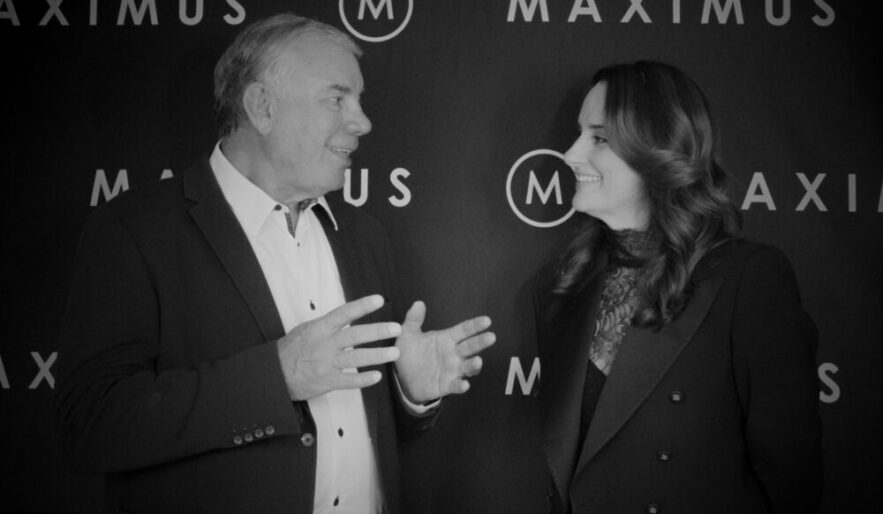The reports on the future of work arrive thick and fast these days. They vary in quality and rigour – from glossy 100-page monsters commissioned by the big end of town to blog posts and LinkedIn updates from freelancers or consultants – each trying to carve out space as ‘thought leaders’ in the scramble for influence. It’s not easy to pick your way through the mess (and who has time to read a report these days, anyway?).
If you do get a chance to dive in to a few however, you’ll find they tend to coalesce around two main narratives. The optimists tell us everything is going to be fine and most of us are going to live in a world where humans and machines work in glorious symphony together – ‘Automotopia’, a place with more than enough goods, services and leisure for everyone. The other, dystopian story (let’s call it ‘Automageddon’) also assumes quick and pervasive adoption of new technologies, but sees them displacing a huge number of jobs at most levels in the public and private sectors, and across industries and geographies, causing wide-ranging social disarray.
Without being melodramatic, the debate can make it seem as though we are standing on a precipice, walking the tightrope between a world of plenty and a world where mega trends, wicked problems and catastrophic decisions at the highest levels of institutions, organisations and leadership lead us down a path of inequality, corruption and mass social dislocation.
For leaders, these multiple pathways of what ‘might’ be ahead can be overwhelming. The possibilities seem endless and equally exhausting. Which one of the outcomes are more likely? Is there something different about it this time around? Let’s discuss…

THE ROBOTS ARE COMING
“We are stumbling blindly into the automation era with no concept or plan to reconcile the need of workers for income and the need of business for cost-cutting and worker-displacing innovations,” wrote The Nation magazine in 1958.
Unsurprisingly, the stories of robots taking jobs have been the focus of a disproportionate amount of the attention. It is a story too good to be false. We are now well and truly into the steep part of the S curve when it comes to machine learning. The algorithms are getting increasingly capable – able to read through a legal document and pick out mistakes, identify fraudulent transactions in millions of bank accounts simultaneously, identify dangerous moles and tumours far more accurately than the world’s best physicians, or even carry out analysis on computational flow dynamics for jet engines. Tasks we once thought could only ever be the domain of humans are being swallowed up by lines of code at
an extraordinary pace.
We are also embedding those lines of code into machines with cameras, sensors and chips made cheap by the smartphone wars of the last decade. Our machines are evolving… from mechanical, to digital, and increasingly, to cognitive. Gil Pratt, chief executive of Toyota’s research arm (TRI), says we are in the midst of “a Cambrian explosion in robotics.” Robots are exploring the depths of Antarctica, mapping ancient Mayan ruins in Belize, cleaning wind turbines in Norway, dropping off medical supplies in Rwanda, and replanting forests in Myanmar. We’re seeing a new wave of automation in how we produce and harvest our food; autonomous tractors in the vineyards of France and apple-picking robots in the orchards of New Zealand. Machines are fetching supplies for nurses in our hospitals and operating taxis without drivers in the suburbs.
In manufacturing, big, dangerous robots have traditionally been kept separate to workers, partitioned off by cages. Now though, thanks to advancements in sensing and improved dexterity, they’re entering the workplace to work side by side with humans, cleaning the floors, doing stocktake in supermarkets and fetching boxes for e-commerce in warehouses. Amazon is opening stores with no cashiers, and Walmart now has robots patrolling the aisles. Policymakers and analysts have looked at this onset of technological innovation and drawn dire conclusions. In a famous 2013 paper, Oxford’s Carl Frey and Michael Osborne analysed 702 occupations in the United States and concluded 47 per cent of them were highly automatable. Research by MIT’s Daron Acemoglu, based on data from 1990 to 2007, found that for every robot installed on a factory floor in the US, an average of six jobs were lost. In Australia, a 2015 report by the Committee for Economic Development of Australia (CEDA) predicted more than five million jobs – 40 per cent of jobs that exist today – had a moderate-to-high likelihood of disappearing in the next 10 to 15 years. And a 2019 McKinsey report predicted the automation of up to 46 per cent of jobs in Australia by 2030. The report estimates 3.5 million to 6.5 million full-time equivalent jobs could be affected, with 1.8 million to five million workers needing to change professions.
The assumptions embedded in these Automageddon narratives make for terrifying headlines, and the narrative is enthusiastically promoted by an army of journalists looking to drive traffic to websites. However, the assumptions are questionable: that automation creates few jobs short-term or long-term; that whole jobs can be automated; that the technology is perfectible; that organisations can seamlessly and quickly deploy machine learning, that humans are machines who can be replicated; or that it is politically, socially and economically feasible to apply these technologies. Then there are the macro factors. With ageing populations, productivity gaps and skills shortages predicted across many G20 countries, the danger might be too little, rather than too much labour. Perhaps the biggest issue, however, is that each report fails to take into account what legendary Austrian economist Joseph Schumpeter, called “the outstanding fact in the economic history of capitalist society”: Innovation.
“We are using robotics and AI to make the job safer and make it easier for people to do what they do best, which is be creative and use their mind.”
– Jeff Wilk, CEO Amazon Worldwide Consumer Division.
THE FLYWHEEL EFFECT
The view among macroeconomists for several decades has been that technology will always create jobs. The alarmists say this time is different and that it will destroy jobs. The truth is it’s capable of doing both. In 1978, a Harvard Business School student named Dan Bricklin was sitting in a classroom, watching his accounting lecturer filling in rows and columns on the blackboard, erasing and rewriting to make everything add up, just as accounting clerks all over the world did every day in their paper ledgers. A two-page spread across the open fold of the ledger was called a ‘spreadsheet’.
Bricklin, a computer programmer, thought a computer might be able to do a better job and wrote a program for the new Apple II personal computer – an electronic spreadsheet – and, on October 17, 1979, VisiCalc went on sale. Overnight, it was a sensation. The first ‘killer app’: a software program so essential you would buy a computer just to be able to use it. Many accountants and business owners today divide their professional experience
into two periods: before and after the advent of the electronic spreadsheet. It was the ultimate robot accountant, putting hundreds of thousands of accounting clerks out of work. In the US there are 400,000 fewer accounting clerks today than in 1980, the first full year that VisiCalc went on sale.
But there are also 600,000 more jobs for regular accountants.
In the age of the spreadsheet, the repetitive, routine parts of accountancy disappeared. Crunching numbers became cheaper, more versatile, and more powerful, so demand went up. What remained – and indeed flourished – required more judgement. And, the spreadsheet created whole new industries. There are countless jobs in high finance today that now depend on exploring different numerical scenarios – tweaking the numbers and watching the columns recalculate themselves. These jobs barely existed before. The point
is not really whether 600,000 is more than 400,000: sometimes automation creates jobs and sometimes it destroys them. The point is that automation reshapes the workplace in much subtler ways than “a robot took my job”.
The airline industry provides another salutary example of this ‘flywheel effect’ in action. Today, most of the task of being an airline pilot is automated. On the average Boeing and Airbus flight, a human only manually controls the plane for a total of six minutes, mostly while the plane is taking off. That’s changed the role of a pilot – they’ve been given more freedom to communicate safety issues. It doesn’t always go right – as the executives at Boeing are all too aware – but of course nobody ever writes stories about the planes that land. Statistically, it’s still safer to fly today than at any other point in history. And even though machines have taken over more of the task of flying, there has been zero decrease in the number of commercial pilots – in fact, quite the opposite. Airlines are reporting major shortages of pilots around the world. As safety has improved, costs have come down, flying has become more popular, and passenger numbers have increased, so it stands to reason that more planes, and pilots, are now required.
Or how about “The retail apocalypse” – a popular story in the US media that blames the
internet for killing brick-and-mortar stores? Makes for great copy, but unfortunately it’s just not accurate. While many older brands and large-scale department stores are getting smaller, or even going away, a 2019 research report from IHL Group reveals an entirely different saga playing out in the wider marketplace. For every one retailer closing a store, 5.2 are opening new locations, and that pattern holds true across the board. There are more companies opening stores than closing them in all retail segments – even department stores. In 2018, the overall number of US retail stores rose by 3100, according to Census Bureau data.
What’s true for an industry can also be true for an individual company. Amazon now has
a global full-time and part-time workforce of 647,000 – 50 per cent more people than Alphabet, Apple, Facebook and Microsoft combined. Amazon employs more than six times as many workers as it did in 2010. It has been adding an average of 337 people a day and currently has 28,000 open positions. Far from taking over warehouse workers’ jobs, robots are actually helping Amazon pay people higher wages, according to the company’s chief executive of its worldwide consumer division, Jeff Wilke. “We are using robotics and AI to make the job safer and make it easier for people to do what they do best, which is be creative and use their mind,” Wilke said in a recent interview. “Those small robots have made the job safer, and they’ve made it more efficient, which has allowed us to pay higher wages.”
The flywheel effect can happen in places we least expect it. There’s now a robot nurse called Moxi at Dallas General Hospital, who performs about 30 per cent of tasks nurses do that don’t involve interacting with patients, such as running errands or dropping off specimens for analysis at a lab. Nurses can set up rules and tasks so that the robot gets a command when certain things change in a patient’s record. If a patient has been discharged and their room is marked clean, Moxi will take a set of fresh supplies to the room so that it’s all ready to go for the next person. That means nurses don’t have to remember tasks that used to be part of their daily job, which is a meaningful way to reduce their cognitive load. “We’re helping them augment their staff,” says Andrea Thomaz, one of Moxi’s inventors. “It’s hard to argue that we’re taking anyone’s job. Everyone is trying to make the nurses they have go further.”

NEW TECHNOLOGIES, NEW JOBS
New technologies create jobs we often could never imagine. According to James Manyika, the Director of the McKinsey Global Institute, if you look at any 10-year period, in most economies, developed and developing, about 10 per cent of occupations didn’t exist in the previous 10-year period. Ten years ago, nobody imagined a job like drone operator. Rwanda’s busiest airport, for example, is a drone port. It delivers blood and other urgent medical supplies across the country. These drone operators have helped make more than 13,000 deliveries and the drones have flown over a million kilometres.
Capitalism’s capacity for creative destruction means that the picture of severe job loss painted by many policymakers earlier this decade has changed dramatically, though not necessarily in the headlines. The prospect of a robot apocalypse is, now at best, mixed. In 2018, the employment rate among people of working age was the highest ever in Britain, Canada, Germany, Australia and 22 other OECD countries. And the OECD countries with the highest levels of automation are also the ones with the lowest levels of unemployment. The World Economic Forum, for 2018-2022, found automation replacing 980,000 jobs while creating 1.74 million new ones. The Asia Development Bank has come out as positive on net job creation from automation. Price Waterhouse Coopers estimated that the net job effect of automation in the UK from 2017-2037 would be a slight gain of 168,000 jobs (7.176 million created, 7.008 million displaced). What is startling here is that as time has gone by, the estimates for net job loss from automation have been disappearing to the point of being
negligible. Companies such as global research firm Gartner are saying that starting in 2020, automation and artificial intelligence will cause industry to add more jobs than it takes away. “It will radically change many positions,” says John-David Lovelock, research vice-president at Gartner, “but at the end of the day it will end up adding jobs.” What the net figures mask, however, is the considerable disruption and shift in skills going forward, meaning serious qualifications to the Automageddon and job-loss narrative. And here is where the panic sets in.
The OECD countries with the highest levels of automation are also the ones with the lowest levels of unemployment.
IT’S THE POLITICS, STUPID
“We should not be haunted by the spectre of being automated out of work,” says US Congresswoman Alexandria Ocasio-Cortez. “We should not feel nervous about the tollbooth collector not having to collect tolls. We should be excited by that. But the reason we’re not excited about it is because we live in a society where if you don’t have a job, you are left to die.”
Ocasio-Cortez’s quote speaks specifically to the American workforce, but she has a point
… it’s not all rainbows. The figures on job creation still mask a deeper structural inequality, and don’t account for the people who have become so discouraged that they don’t bother looking for jobs in the first place. This is the real danger that’s all too often ignored in the simple utopia versus dystopia readings of automation. It’s not that the robots take away the
jobs, it’s that in changing the nature of jobs, people get left behind. This is the much bigger storyline – globally, hundreds of millions of workers will need to change occupations, and/or
need new mixes of skills in order to operate in future workplaces. Whether this is a likely cancelled or postponed Automageddon will depend on choices – on training, financial support, education, speed of automation and what the technologies are designed for.
Moreover, these choices will be made by governments, non-government agencies, corporates and individuals in the face of multiple factors and dynamic business, social, political and economic contexts. This means that automation is no longer a technological question, it’s a cultural and political one. In the past the economic benefits from new technologies have always been enough to create more jobs than were lost, but today, the location of jobs and the kind of work they involve are changing, and that’s what’s causing real pain to people and to local economies.
This is why building relevant skills throughout the population is paramount for Australia. If we do not, then the labour market will split into those who have the skills to work with new technologies and those who do not. A generation of workers unprepared for such a significant technological shock could suffer. It’s often instructive to look at different cultural attitudes to machines here. In countries such as Sweden and Norway, conversations around automation take on a very different tone – robots aren’t feared but embraced. A robust welfare state means people can be retrained. And in places such as Japan, robots are embraced because they need all the help they can get, thanks to a decreasing population and a rapidly ageing one too.
In the US, the UK and increasingly, Australia, the fears are a lot worse because there is less of a safety net: will we all be superfluous meat sacks in a world of metal and machine? Is automation a normal feature of society? Are our fears of the future misplaced? Are creativity and human skills really enough to set us apart?
The answer is yes, and no. Business leaders need to recognise the difference and guide their actions accordingly. This is not a picture of what will happen. Rather it is what could happen if we don’t effectively heed the warning signs. The robots are coming, but it’s always going to be left up to humans to decide what to do with them.
This article was originally published in the 4th edition of M Magazine, an exclusive print magazine aimed at inspiring and driving change through Australia’s executives and heads of HR.








